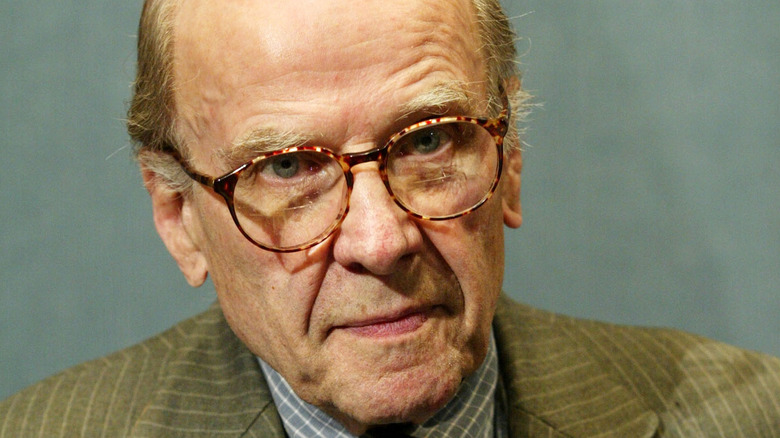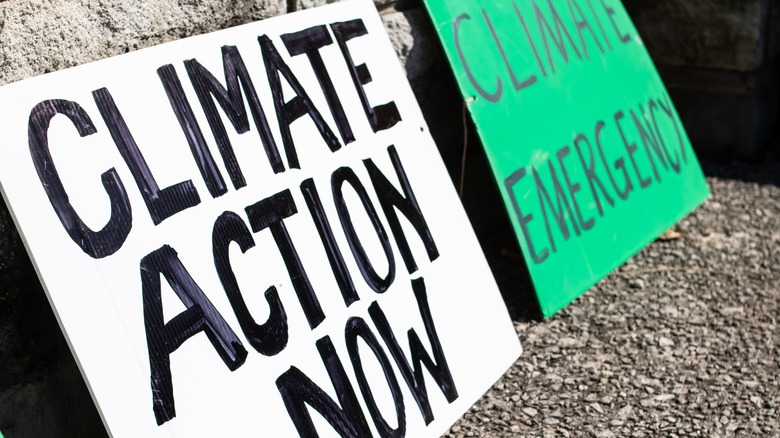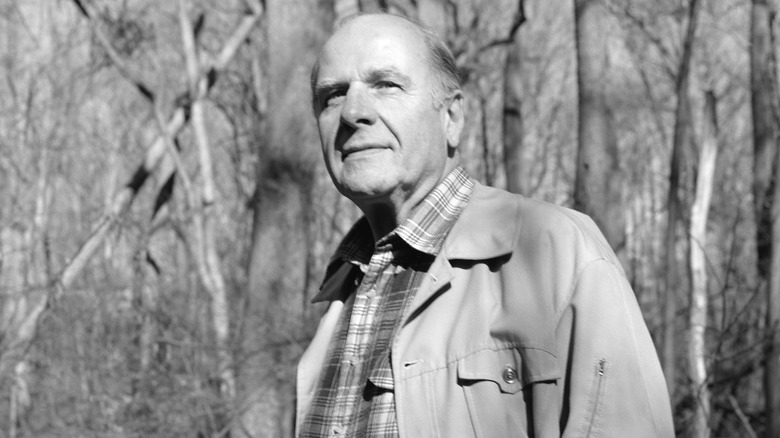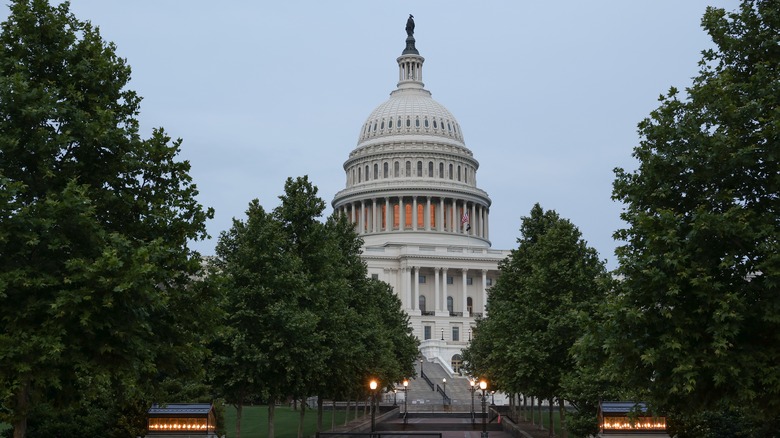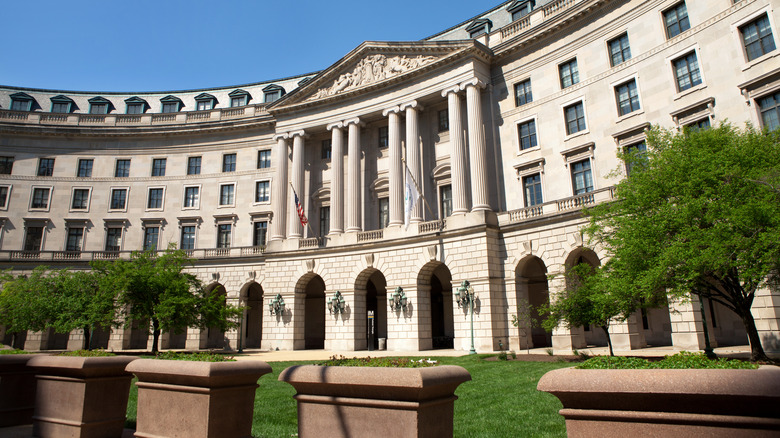What Did The Dirty Dozen Mean In 1970?
The late '60s and early '70s were a time of massive change. The United States was ostensibly losing the war in Vietnam, while the peace and love image of the counter culture was tarnished by the heinous Tate-LaBianca murders at the hands of Charles Manson's "Family." While it was a turbulent time, to say the least, some good things came out of it, including an increase in social activism.
The civil rights and feminist movements were in full swing, leading the charge in the era's activism. However, another movement that was "heating up" at the time was the environmental movement.
According to Michigan in the World, one of the environmental movement's major stumbling blocks was that it lacked any political leverage to facilitate change. That changed when Senator Gaylord Nelson decided to shake things up and gain some political footing by galvanizing public opinion with the first Earth Day in 1970. This then paved the way for an environmental activism group to release its "Dirty Dozen" list, consisting of twelve politicians responsible for suppressing environmental polices.
Who was Gaylord Nelson?
Gaylord Nelson hailed from Wisconsin, the same state he would later go on to represent, according to Wilderness. Nelson took a brief respite from the Wisconsin way of life, briefly trading it for the west coast and San Jose State College. However, he returned just a few years later and earned his law degree from the University of Wisconsin.
Nelson always had political aspirations, and after returning from service in World War II, he began to pursue them. His first elected position came in 1949 when he started serving in the Wisconsin state legislature. Just eleven years later, in 1959, Nelson became the Governor of Wisconsin (via Nelson Institute for Environmental Studies). A major part of his administration involved advocating for environmental causes that included protecting land and wildlife habitat, as well as causes that promoted environmental quality.
In 1962, Nelson was elected to the United States Senate — where he went on to serve for 18 years — and he took his environmentalist agenda with him to Washington.
The early environmental movement
Concerns over the environment's well-being go back thousands of years, but there was an increase in concern during the Industrial Revolution, according to Britannica. The effects that increased industrial presence had on both the environment and public health were already being seen by the late 19th century. However, the consensus was that social issues, like the threats to the environment, should be worked out by the free market, and didn't require government intervention.
One early activist who played a significant role in the early environmentalist movement was writer and conservationist, John Muir. He felt that the government should be responsible for protecting the country's wilderness, which helped lead to the establishment of national parks and forests.
By the 1960s, environmentalism and politics became even further tied together as political parties and organizations emerged that championed green initiatives as part of their platforms. Some groups took this a step further still by committing acts of ecoterrorism and violence that were designed to draw attention to environmental issues.
Gaylord Nelson founded Earth Day
In the 1960s, Gaylord Nelson continued to try to raise awareness for environmental causes but was often met with resistance from other lawmakers. According to Nelson Earth Day, Nelson once argued on the Senate floor for a bill that would eradicate phosphates from detergent, saying "we need this ... just as desperately as we need the defense against atomic missiles." His warning was ignored and the bill was voted down.
Nelson's attempts at getting the attention of lawmakers weren't working, so he decided to change things up and try rallying public opinion in favor of new environmental policies. He came up with a plan to hold a coordinated series of events across the country to teach people about the environment and why it was important to protect it. He pitched the idea in September 1969, and seven months later, the first Earth Day was held. It was a massive success with events held all over the country which varied from small ones at local schools to ones that drew thousands in major cities.
Nelson spoke in Denver, Colorado on the first Earth Day. "Our goal is not just an environment of clean air and water and scenic beauty. The objective is an environment of decency, quality, and mutual respect for all other human beings and all living creatures," he told the crowd.
The Dirty Dozen list
With environmental issues very much in the public consciousness following the success of Earth Day, another group decided it was time to really grab lawmakers' attention.
Environmental advocacy group Environmental Action decided that the way to do this was by rattling the proverbial cages of politicians standing in the way of environmental policy. According to Michigan in the World, they spent months combing through voting records to determine which 12 lawmakers had voted against matters related to the environment the most.
The first edition of the list was unveiled ahead of the 1970 congressional elections, and the hope was that exposing the congressmen's voting records would be enough to sway public opinion and prevent them from winning re-election. The list contained both Republicans and Democrats.
Of the 12 politicians on the list, seven of them lost their re-election bids. Environmental Action tried to build on that success and continued putting out more lists. In 1972 four of the twelve politicians failed to win their elections, while in 1974 eight of the twelve on the list failed to win re-election.
The environmental movement in the years that followed
The inaugural Earth Day and Dirty Dozen list were big moments in the environmental movement gaining traction both in Washington and nationally. By the end of 1970, the Nixon Administration ushered in the Environmental Protection Agency, or EPA, in addition to a massive, 37-point message that the president delivered to both the United States Senate and House of Representatives. This included asking for $4 billion to improve water treatment facilities and early steps toward introducing guidelines to combat vehicle emissions.
Gaylord Nelson left the Senate in 1981, but he continued advocating for environmental issues. He became the counselor for The Wilderness Society (via Nelson Earth Day). He was a vocal opponent of various attempts in the 1980s and '90s to do away with or change the legislation he fought for in the 1970s. Nelson also received the Presidential Medal of Freedom in 1995 and the Institute for Environmental Studies at the University of Wisconsin was renamed in his honor, as the University of Wisconsin shows.

